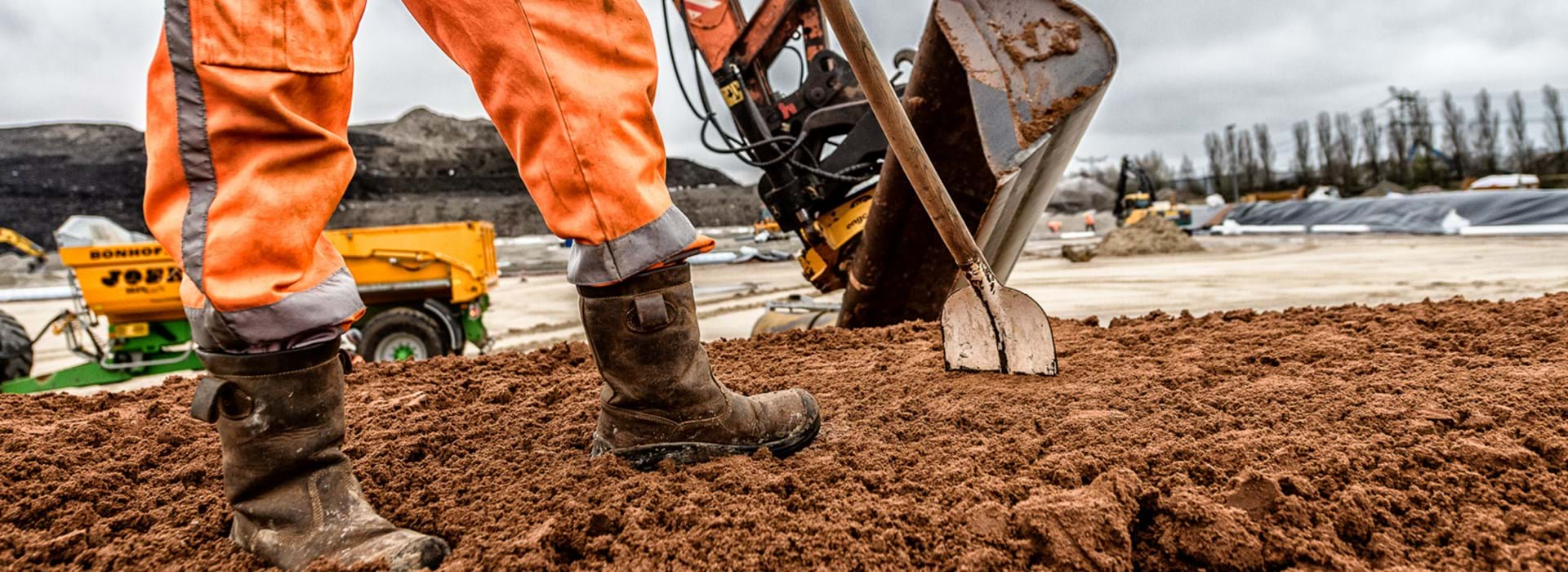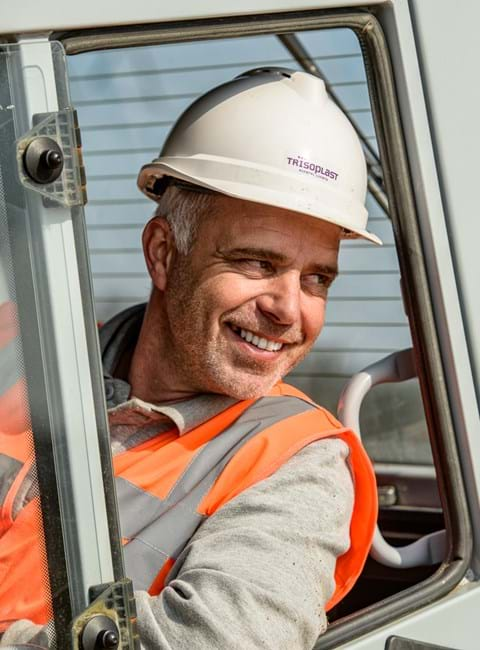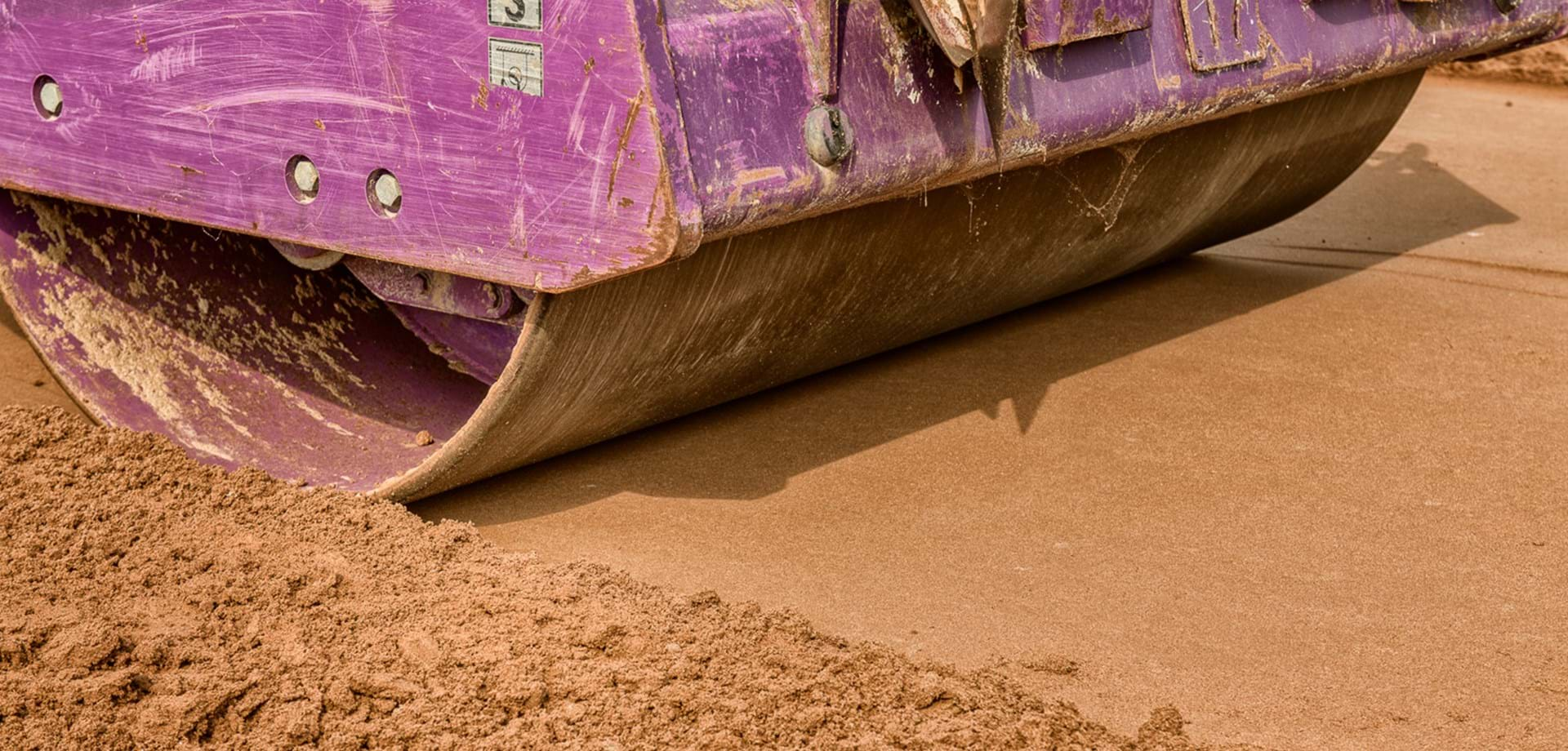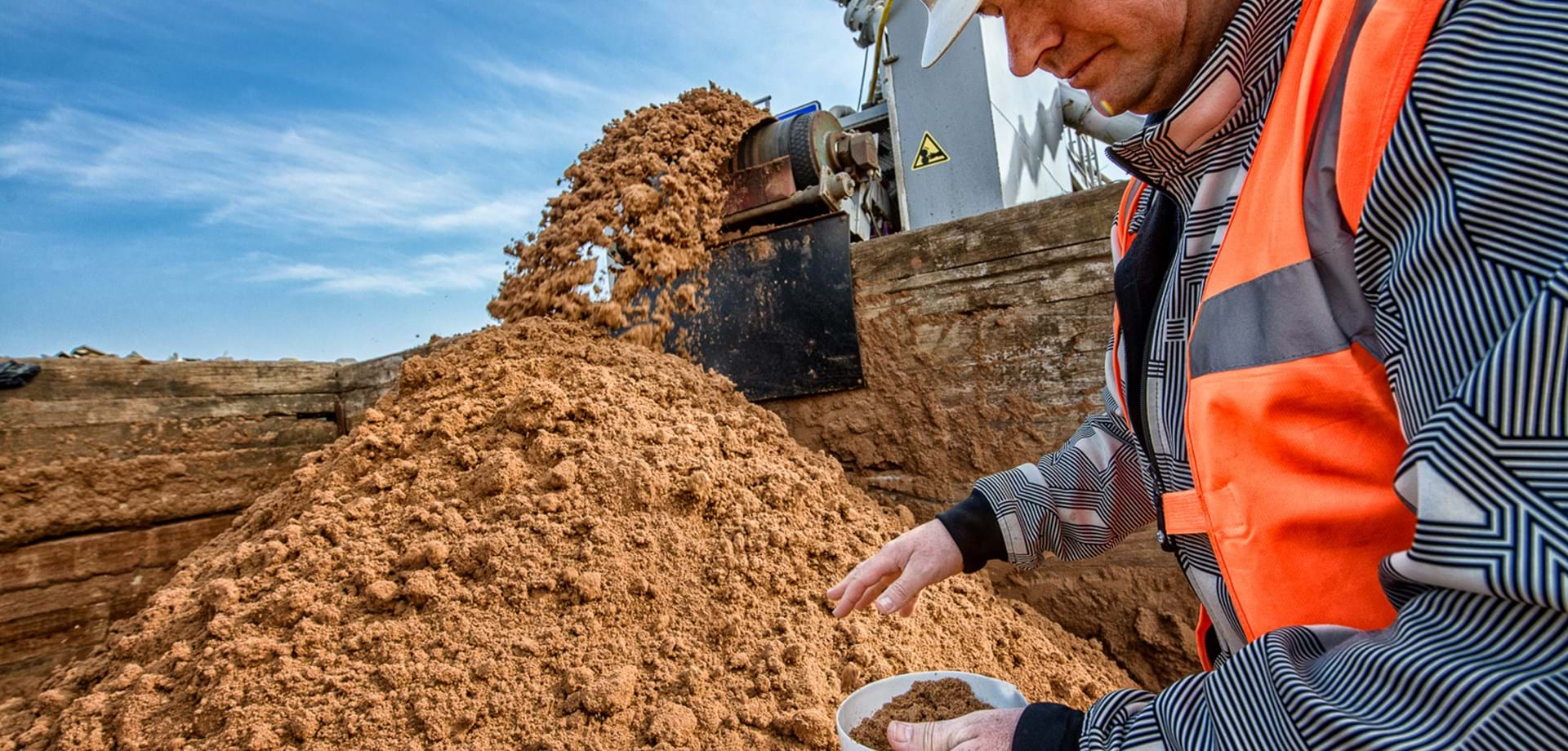
WHAT IS TRISOPLAST?
Trisoplast is a robust, flexible, durable and sustainable isolation solution that is used in all kinds of projects around the world. From a mineral bottom liner in landfills to water isolation systems in civil engineering projects and water features on golf courses. Initially developed by the Dutch company Tritech Solutions, Trisoplast has been in use for more than 25 years. But how does Trisoplast work exactly?
Trisoplast consists of a special clay-polymer component mixed with a mineral filler. Sand is extremely suitable for this purpose. Trisoplast’s highly effective isolation properties are due to the third ingredient – water. A robust layer of this mixture is installed on-site. It can be immediately covered with a ballast layer of sand or soil, for example. This provides the necessary overburden. Next, any water from the surrounding soil that comes into contact with the Trisoplast layer will be absorbed. This creates a matrix of chemical bonds between the swelling clay minerals and the dissolved polymer. The resulting strong, dense hydrogel structure has considerably better isolation properties than traditional liners. This swelling hydrogel fills up the pores in the granular filler (e.g. sand). This produces the waterproof and flexible layer that makes Trisoplast so unique. At the same time, the gritty structure of the filler lends mechanical strength to this mineral layer. The weight of the overlying ballast layer helps to keep the Trisoplast layer at peak strength, by preventing any excessive swelling.
Proven protection
Trisoplast has been around for well over 25 years. During that period its environmental protection and isolating properties have been regularly tested by various internationally recognised knowledge institutes. Comparative studies have shown that Trisoplast has significantly better isolation properties than traditional clay liners and the geosynthetic clay liners (GCLs) that are now in common use. This is partly why it offers a higher level of environmental protection and a substantially longer service life. It is important to point out that our solution consists of almost exclusively of natural constituents. Thanks to this combination of properties, Trisoplast’s market share in the isolation of Dutch waste disposal sites currently exceeds 90 percent.
Easily moulded
In addition to its versatile range of applications, Trisoplast is easily moulded around ducts and structures. Trisoplast’s self-healing capacity and its robust composition make it highly resistant to puncturing by sharp elements (pebbles, construction waste, etc.) in the top and bottom layers, which are unavoidable on a construction site. Film-based solutions (geomembranes), for example, are far less resistant to puncturing. Its chewing gum-like properties mean that Trisoplast is easily moulded, which is invaluable on poor substrates and when built structures settle. Trisoplast has a substantial water retention capacity and is resistant to shrinkage. So, in situations where traditional clay liners tend to dry out and crack, Trisoplast goes on working. Together, these properties result in a durable, safe and simple liner that is quick to install. Even when it has to be fitted around numerous connections.

GET IN TOUCH!
Want to find out what Trisoplast can do for your project, company or sector? Then get in touch with us. We’ll be happy to help.
Send us an e-mail, call us, or use the form on this web page.
E-mail:info@tritechsolutions.nl
Telephone no.: +31 (0)418 - 636 030

